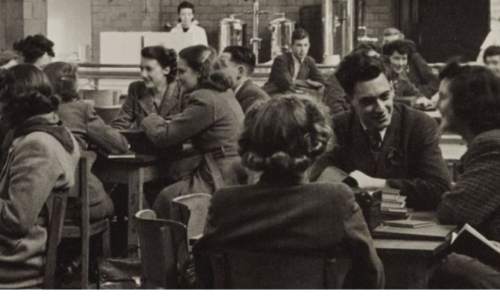In a New York minute: breakthrough could get us to NYC in 2 hours
Our partners Research impact and institutes 2nd August 2017
A new breakthrough means that we could soon be jetting off from London and touching down in the Big Apple just two hours later.
While Concorde may have taken its last flight some years ago, the research and development in hypersonic travel has never stopped. And now new research from The University of Manchester in collaboration with Central South University in China means that super-speedy flights could soon be available to us again.
Feel the burn
One of the obstacles standing in the way of hypersonic travel becoming a viable commercial option is the impact of travelling so fast on the aircraft. Hypersonic speeds are five times faster than the speed of sound.
With this extreme speed comes extreme heat, and this can put the integrity of the aircraft structure at risk. When the heat of the air you’re travelling through is between 2,000 and 3,000 degrees C, it’s little wonder if the plane suffers as a result.
But before you give up on your hopes of a hypersonic hop across the Pond to New York, a solution has been discovered. A new type of ceramic coating could protect aircraft travelling at speeds of Mach 5 or above from the extreme heat they generate.
Aircraft are already bolstered with ultra-high temperature ceramics (UHTCs) to protect them, but flying faster than the speed of sound requires something especially resilient. That’s where the work carried out by teams at The University of Manchester, the Royce Institute and Central South University (published in Nature.com) comes in.
Super ceramics
Together, the teams have created a new type of UHTC that’s made using a process called reactive melt infiltration (RMI). The result is then reinforced with carbon-carbon (C/C) composite (so good they named it twice).
It is this coating that can help to reduce the degradation of the surface of the aircraft in the extreme heat. In fact, this new coating is proving to be 12 times more effective at temperatures of up to 2,500 degrees C than the conventional UHTC in use today.
Talking about the breakthrough, Professor of Materials Science Ping Xiao said: “The current number of candidate UHTCs for use in extreme environments is limited and it is worthwhile [exploring] the potential of new single-phase ceramics in terms of reduced evaporation and better oxidation resistance.
“In addition, it has been shown that introducing such ceramics into carbon-fibre-reinforced carbon matrix (C/C) composites may be an effective way of improving thermal-shock resistance.”
A further benefit of the development is that the new ceramics can be manufactured as powder, layered material or bulk. This increases their potential applications.
Thanks to this adaptability, as well as being used to strengthen and protect hypersonic models, the material can be used in the manufacture of reusable rockets, re-entry spacecraft and gas turbines, as well as army vehicles and nuclear power plants.
But, for now, we’re more excited about the potential of there being just two little hours between us and the Big Apple.
Words – Hayley Cox
Photo credit – Navneet Yadav




